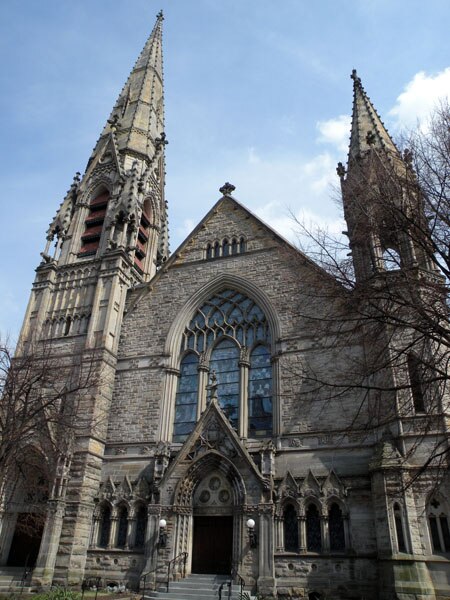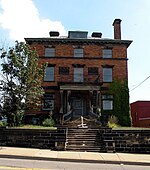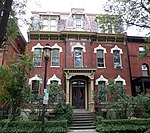Calvary United Methodist Church
19th-century Methodist church buildings in the United StatesChurches completed in 1895Churches in PittsburghGothic Revival church buildings in PennsylvaniaMethodist churches in Pennsylvania

Calvary United Methodist Church at 971 Beech Avenue in the Allegheny West neighborhood of Pittsburgh, Pennsylvania, was built from 1892 to 1895. This Gothic Revival styled Methodist church was designed by architects Vrydaugh and Shepherd, with T. B. Wolfe. It was added to the List of Pittsburgh History and Landmarks Foundation Historic Landmarks in 1972, and the List of City of Pittsburgh historic designations on February 22, 1977.
Excerpt from the Wikipedia article Calvary United Methodist Church (License: CC BY-SA 3.0, Authors, Images).Calvary United Methodist Church
Dounton Way, Pittsburgh
Geographical coordinates (GPS) Address Nearby Places Show on map
Geographical coordinates (GPS)
| Latitude | Longitude |
|---|---|
| N 40.4521444 ° | E -80.0188389 ° |
Address
Calvary United Methodist Church
Dounton Way
15290 Pittsburgh
Pennsylvania, United States
Open on Google Maps










